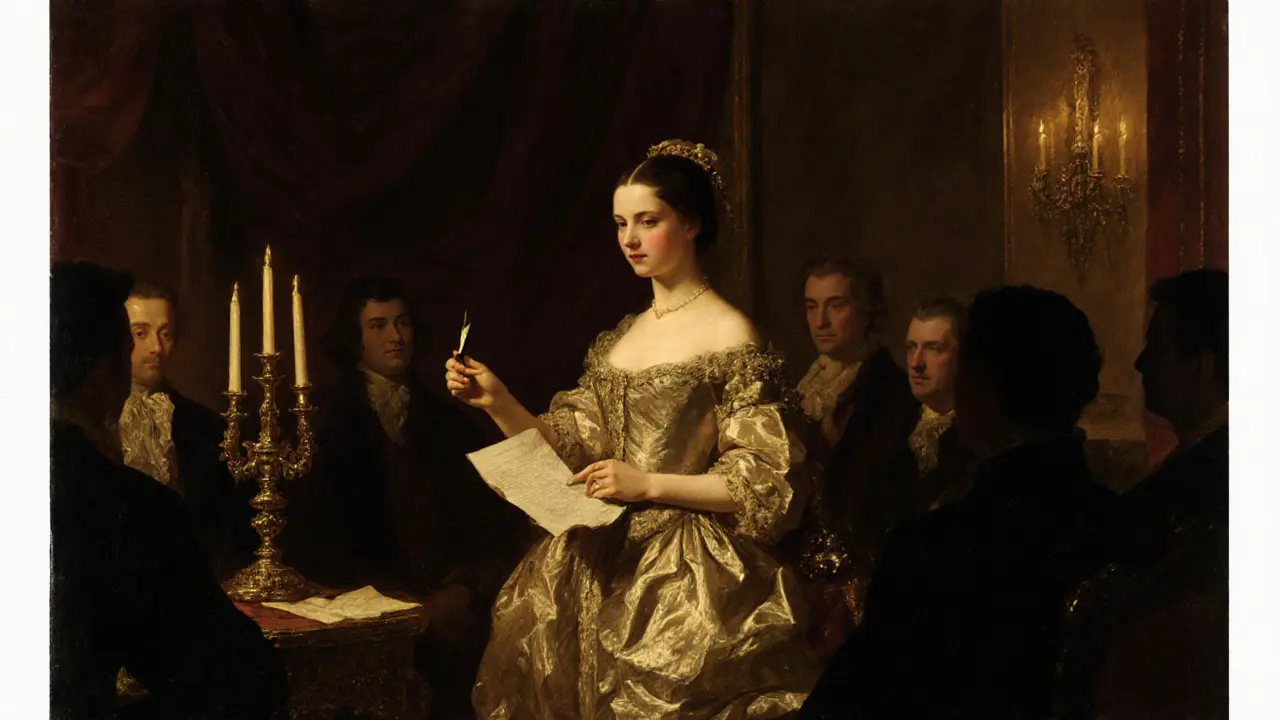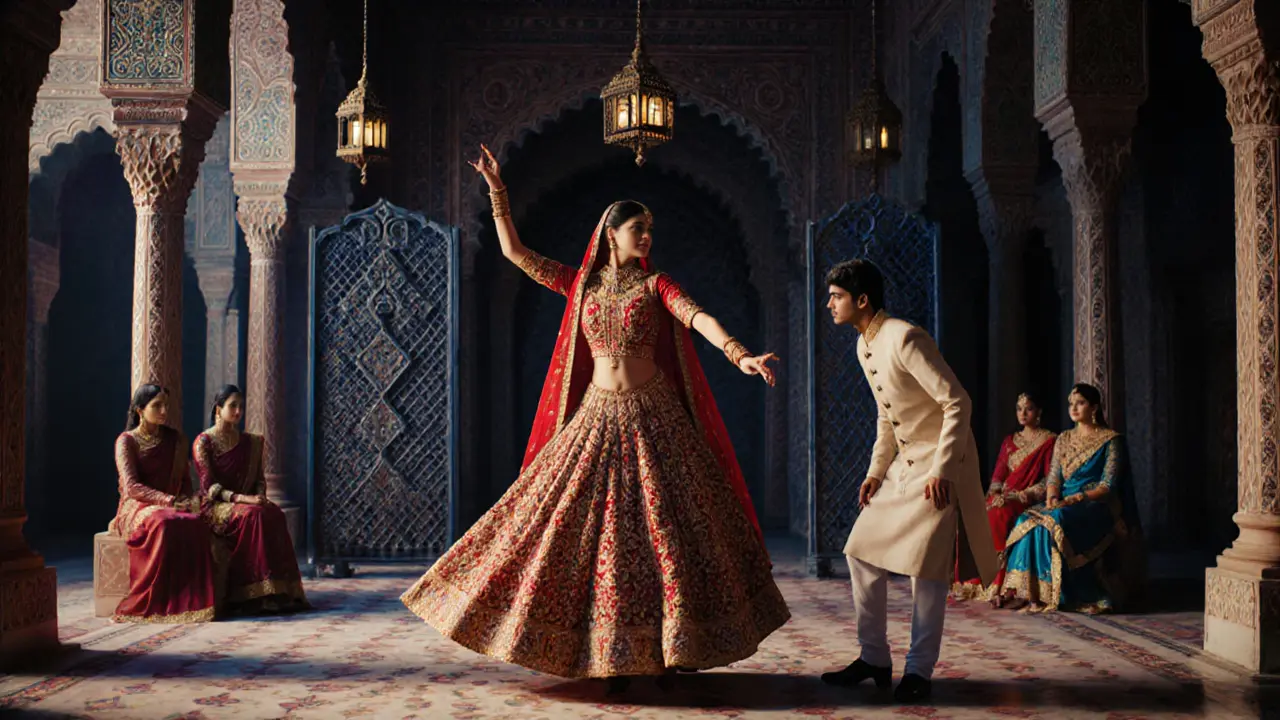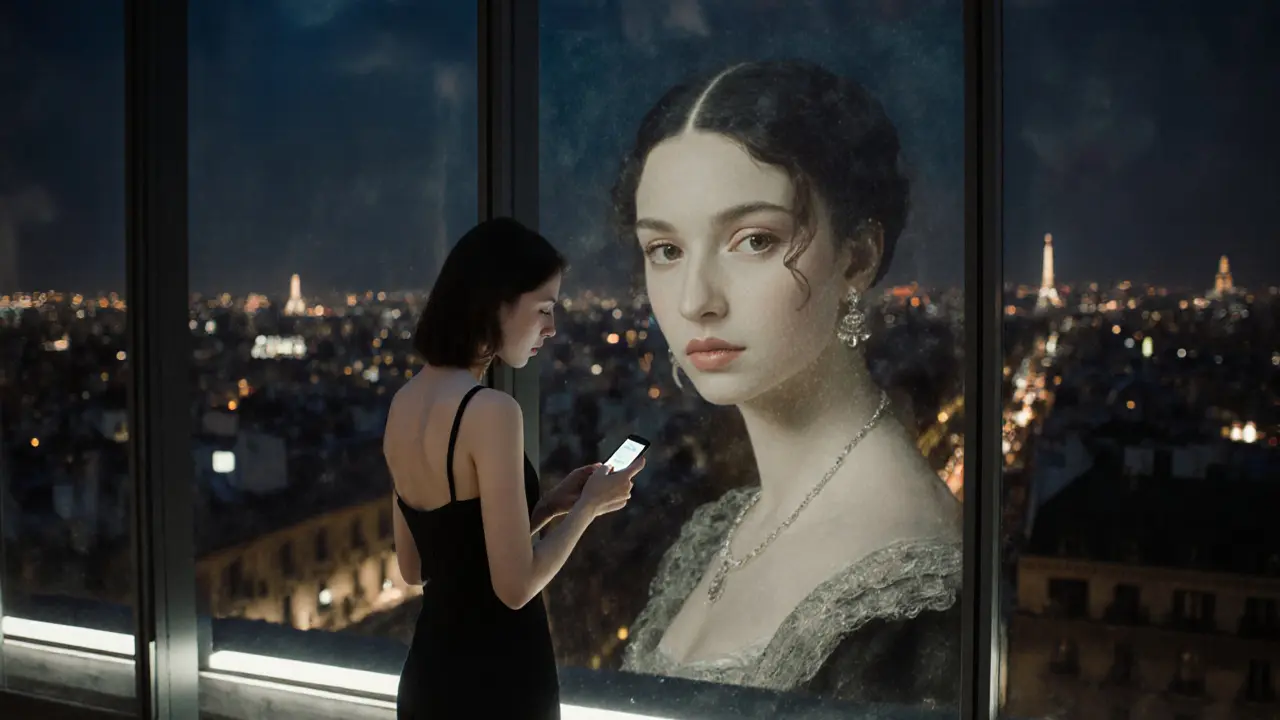
You’ve seen them: the women in silk gowns, shimmering under candlelight, whispering secrets to powerful men. They’re elegant, dangerous, and always unforgettable. Courtesans in film and TV aren’t just side characters-they’re magnetic forces that shape stories, challenge norms, and force us to ask: who really held the power?
What Is a Courtesan, Really?
Let’s clear this up first. A courtesan wasn’t just a high-end sex worker. She was a professional companion-educated, politically savvy, and often more influential than the wives of nobles. In 18th-century Venice, 19th-century Paris, or Mughal India, courtesans moved in elite circles. They played music, wrote poetry, advised kings, and sometimes controlled fortunes. Their value wasn’t just physical; it was intellectual, cultural, and social.
But Hollywood and Netflix rarely show that. Instead, they lean into the fantasy: the tragic beauty, the doomed romance, the seductress who brings men to ruin. The truth? Most courtesans were survivors. Many started poor. Many were sold or abandoned. Their power came from wit, not just beauty.
Why Do We Keep Seeing Courtesans on Screen?
There’s something irresistible about the courtesan archetype. She’s free-unbound by marriage, religion, or societal rules. She chooses her lovers. She owns her body. She lives on her own terms. In a world that still judges women harshly for sexuality, the courtesan becomes a symbol of rebellion.
But here’s the twist: most portrayals are written by men. And that changes everything. When a male writer creates a courtesan, she’s often a mirror for male fantasies-mysterious, emotional, ultimately powerless. When women write her? She’s sharper. More complex. More human.
Iconic Courtesan Characters in Film and TV
Some portrayals stick with you. Let’s break down the big ones:
- Marie Antoinette’s Court (2006) - Sofia Coppola’s film doesn’t focus on courtesans directly, but the entire court runs on them. Women like Madame du Barry weren’t just lovers-they were political players. The film hints at that, but doesn’t explore it.
- La Dame aux Camélias (1936, 1981, 2018) - Based on the novel by Alexandre Dumas fils, this story of Marguerite Gautier, a Parisian courtesan dying of tuberculosis, became the blueprint for the tragic courtesan trope. She’s beautiful, self-sacrificing, and ultimately redeemed by love. But she’s also erased by the system.
- Sex and the City (1998-2004) - Samantha Jones isn’t a courtesan, but she plays with the same energy: sexual freedom, financial independence, no apologies. She’s the modern cousin of the courtesan. The show doesn’t call her one, but the DNA is there.
- Marco Polo (2014-2016) - The character of Princess Ping, a courtesan-turned-advisor in Kublai Khan’s court, is one of the rare portrayals where a courtesan wields real political power. She negotiates treaties, manipulates court factions, and survives by brains, not beauty.
- The Great (2020-present) - Catherine the Great’s rise is fueled by her understanding of court politics, including the role of women who sleep with power. The show doesn’t name courtesans often, but their presence is felt in every scene where a woman uses charm to survive.
How Courtesans Are Misrepresented
Most films treat courtesans like tragic heroines who need saving. They’re either killed off, redeemed by true love, or turned into saints. Rarely are they shown as the ones who made the rules.
In reality, many courtesans owned property, ran businesses, and trained younger women in the arts. In 18th-century Japan, oiran courtesans were celebrities. Their outfits cost more than a samurai’s salary. In India, tawaifs were master musicians who taught classical dance to royalty.
But on screen? They’re often reduced to one trait: seduction. Even when they’re played by Oscar-winning actresses, the writing holds them back. They’re not allowed to be boring. Not allowed to be angry. Not allowed to be ordinary. They must always be extraordinary-or dead.

Who Gets to Tell the Story?
There’s a quiet revolution happening. More female directors and writers are reclaiming the courtesan narrative. Take The Handmaid’s Tale-it’s not about courtesans, but it’s built on the same fear: women’s bodies as tools of power. Shows like The Crown and Bridgerton flirt with the idea, but still sanitize it.
One standout is Geisha (2005), based on Arthur Golden’s novel. While controversial for its Western lens, it at least showed the rigorous training, the economic pressures, and the emotional toll. It wasn’t perfect, but it tried.
Now, streaming platforms are giving space to non-Western stories. Indian series like Leila and Delhi Crime touch on the legacy of tawaifs. Korean dramas explore the kisaeng class with more nuance than ever before.
What’s Missing From the Screen?
Here’s what you almost never see:
- Courtesans raising children
- Courtesans retiring and opening schools
- Courtesans who refused clients
- Courtesans who became spies
- Courtesans who wrote memoirs and got published
These aren’t fantasies. They’re history. In 1820s Paris, a courtesan named Rachel de Sylva published a memoir that became a bestseller. In 19th-century Lucknow, a tawaif named Umrao Jaan ran a literary salon. Her poetry is still studied today.
But you won’t find her in a Netflix series.
Why This Matters Today
These portrayals aren’t just about the past. They shape how we see women in power now. When we only accept women as either saints or seductresses, we limit what’s possible.
Modern women in business, politics, and media still face the same traps. Be sexy, but not too sexual. Be smart, but don’t threaten men. Be successful, but don’t forget to be likable.
Courtesans in history didn’t play by those rules. They created their own. And when film and TV finally stop turning them into tragic figures and start showing them as complex, flawed, powerful humans? That’s when the real story begins.

Comparison: Courtesan Archetypes Across Media
| Portrayal | Medium | Power Level | Agency | Realism |
|---|---|---|---|---|
| Marguerite Gautier (La Dame aux Camélias) | Film/Opera | Low | Low | Low |
| Princess Ping (Marco Polo) | TV Series | High | High | Medium |
| Samantha Jones (Sex and the City) | TV Series | Medium | High | Medium |
| Umrao Jaan (Umrao Jaan, 2006) | Indian Film | Medium | Medium | High |
| Madame du Barry (Marie Antoinette) | Film | Medium | Low | Low |
Frequently Asked Questions
Were courtesans really as powerful as some films suggest?
Yes-sometimes more than queens. In places like 18th-century France or 19th-century India, courtesans had access to money, education, and political networks that most women couldn’t dream of. Some owned land, funded artists, and influenced royal decisions. Their power came from charm, intelligence, and timing-not titles.
Why are courtesans often portrayed as tragic figures?
Because tragic stories are easier to sell. A courtesan who dies for love is safe. A courtesan who thrives, gets rich, and retires to a villa? That’s uncomfortable. It challenges the idea that women must be punished for sexual freedom. Hollywood prefers redemption through suffering over success on their own terms.
Are there any modern equivalents to courtesans?
Yes-but we don’t call them that. Think of high-profile influencers, elite escorts who manage their own brands, or even celebrity partners who navigate fame without marriage. They use charm, visibility, and personal brand to gain influence. The tools changed-social media instead of salons-but the strategy? Still the same.
Did courtesans ever write their own stories?
Absolutely. Umrao Jaan Ada wrote poetry and memoirs in Urdu. In France, Ninon de Lenclos published essays on love and independence. In Japan, courtesans kept diaries that historians now use to understand daily life. Their voices were silenced, but never erased.
Why do so many films set courtesan stories in Paris or Venice?
Because those cities were romanticized by Western artists. Paris in the 1800s and Venice in the 1700s became symbols of decadence and beauty. But courtesans existed everywhere-from Istanbul to Kyoto to Delhi. The Western lens ignores those stories because they don’t fit the fantasy.
Final Thought
The next time you watch a courtesan on screen, ask: Is this her story-or someone else’s fantasy? The real courtesans didn’t wait to be saved. They built empires with their voices, their art, and their choices. And if film and TV ever stop turning them into symbols and start showing them as people? That’s when we’ll finally see the truth.
